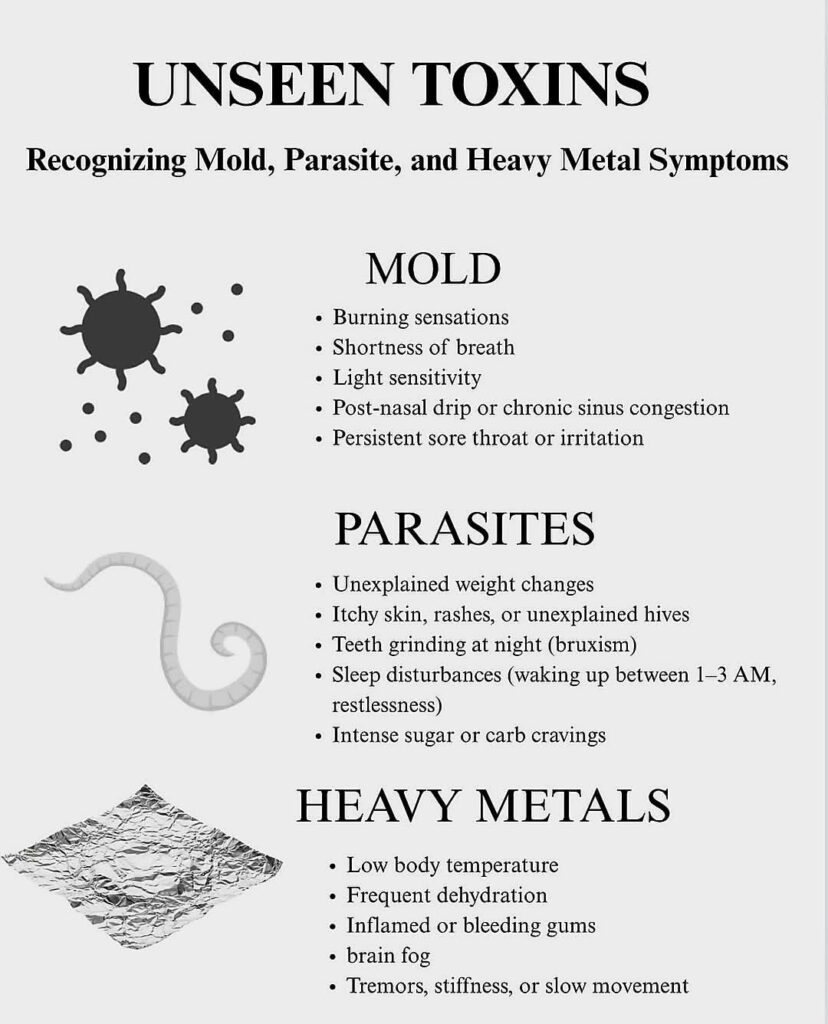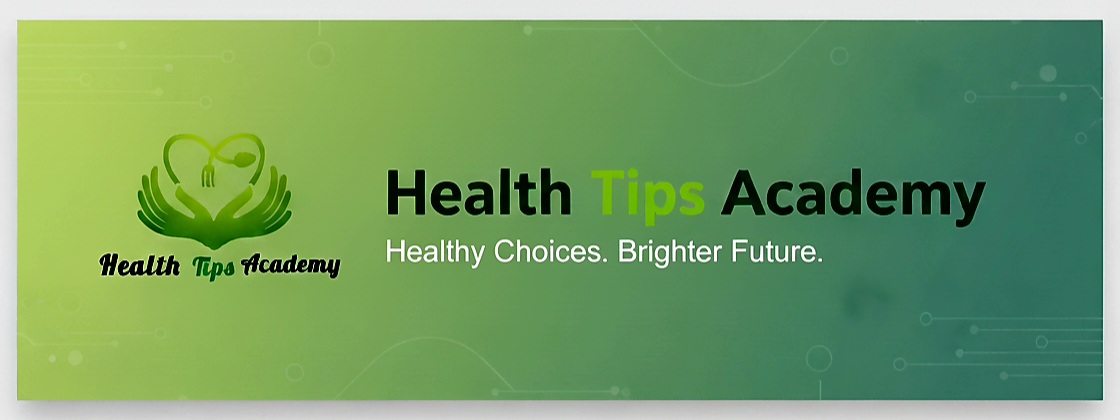
With that crucial disclaimer in mind, here is a general overview of common, supportive detox strategies used under the guidance of healthcare practitioners.
General Foundational Principles for Any Detox
Before targeting specific toxins, the body’s natural detoxification systems must be supported. You cannot “force” toxins out if the pathways of elimination are clogged.
1️⃣. Hydration: Drink plenty of clean, filtered water to help flush toxins through the kidneys and support all cellular functions.
2️⃣. Diet: Eliminate processed foods, refined sugars, and unhealthy fats. These add to the body’s toxic burden and fuel inflammation.
3️⃣. Fiber: A diet rich in vegetables, fruits, and seeds (like flax and chia) ensures regular bowel movements, which is a primary route of toxin elimination.
4️⃣. Sweat: Regular exercise and/or the use of saunas (infrared or traditional) promote the excretion of toxins through the skin.
5️⃣. Sleep: Quality sleep is when the brain’s
glymphatic system clears out metabolic waste. It’s non-negotiable for detoxification.
🔹️🔹️🔹️
How to Approach a Mold Detox
The goal is to stop exposure, support the body’s ability to clear mycotoxins, and bind the toxins so they can be safely excreted.
➡️Step 1: Remove the Source. This is the most critical step. If you are in a water-damaged building, you must address the mold issue or move. No detox will work if you are constantly being re-exposed.
➡️Step 2: Diet. Follow a low-mold diet. This typically involves eliminating mold-prone foods like peanuts, corn, coffee, conventional grains, aged cheeses, and dried fruits.
➡️Step 3: Binders. These are supplements that bind to mold toxins (mycotoxins) in the gut, preventing them from being reabsorbed. They must be taken away from food and medications (usually 1-2 hours before/after).
🔸️Common Binders: Prescription-grade Cholestyramine, Activated Charcoal, Bentonite Clay, Glucomannan.
➡️Step 4: Support. Support the liver and cell function with supplements like:
🔸️Glutathione: The body’s “master antioxidant,” crucial for detox.
🔸️Milk Thistle: Supports liver health.
🔸️NAC (N-Acetyl Cysteine): A precursor to glutathione.
🔹️🔹️🔹️
How to Approach a Parasite Cleanse
The goal is to create an inhospitable environment for parasites and use herbs or medications to kill them off.
🔸️Diet: Eliminate sugar and refined carbohydrates, which are the primary food source for many parasites. A diet high in garlic, pumpkin seeds, pomegranate, and coconut is often recommended.
🔸️Herbal Protocols: Many herbal blends have anti-parasitic properties. Common ingredients include: 🔸️Wormwood
🔸️Black Walnut Hull
🔸️Clove
🔸️Oregano Oil
🔸️Berberine (from plants like Goldenseal or Oregon Grape)
🔸️Prescription Medication: For confirmed parasitic infections, a doctor may prescribe anti-parasitic drugs like Albendazole or Ivermectin, which are highly effective.
🔸️ Support the Cleanse: As parasites die, they can release toxins. Using binders (like those for mold) and supporting bowel motility is essential to avoid “die-off” symptoms (headaches, fatigue, nausea).
🔹️🔹️🔹️
How to Approach a Heavy Metal Detox
This is the most delicate process and should not be attempted without professional supervision. The goal is to safely “chelate” or pull metals from tissues and escort them out of the body.
▫️Diet:
▫️ Cilantro: Believed to help mobilize metals from tissues.
▫️ Garlic & Onions: Contain sulfur, which supports liver detox pathways.
▫️ Pectin: Found in apples and carrots, can help bind to some metals in the gut.
▫️ Selenium: Helps protect the body from mercury toxicity.
▫️ Supplemental Binders:
▫️ Modified Citrus Pectin: Shown in studies to safely bind to heavy metals like lead and mercury without removing essential minerals.
▪️ Chlorella & Spirulina: Algae that can bind to certain metals.
▪️ Professional Chelation Therapy: This is the medical standard for significant heavy metal toxicity.
▪️Oral Chelators: Such as DMSA (Succimer) or DMPS.
▪️ IV Chelation: Such as EDTA.
▪️ These are powerful prescription treatments with potential side effects and must be managed by a doctor.
A Sample Supportive Daily Routine (Under Professional Guidance)
1️⃣. Morning: Upon waking, drink a large glass of filtered water with a squeeze of lemon.
2️⃣. Breakfast: A smoothie with cilantro, chlorella, and flax seeds.
3️⃣. Mid-Morning: Take supportive supplements (like NAC or Milk Thistle) with food.
4️⃣. Lunch: A large salad with lean protein and an olive oil-based dressing.
5️⃣. Afternoon: Take binders (like Activated Charcoal or Modified Citrus Pectin) away from food and other supplements.
6️⃣. Dinner: A clean protein (e.g., salmon, organic chicken) with steamed vegetables and garlic.
7️⃣. Evening: 20 minutes in an infrared sauna, followed by a cool shower.
8️⃣. Before Bed: Take magnesium to support sleep and bowel regularity

Leave a Reply